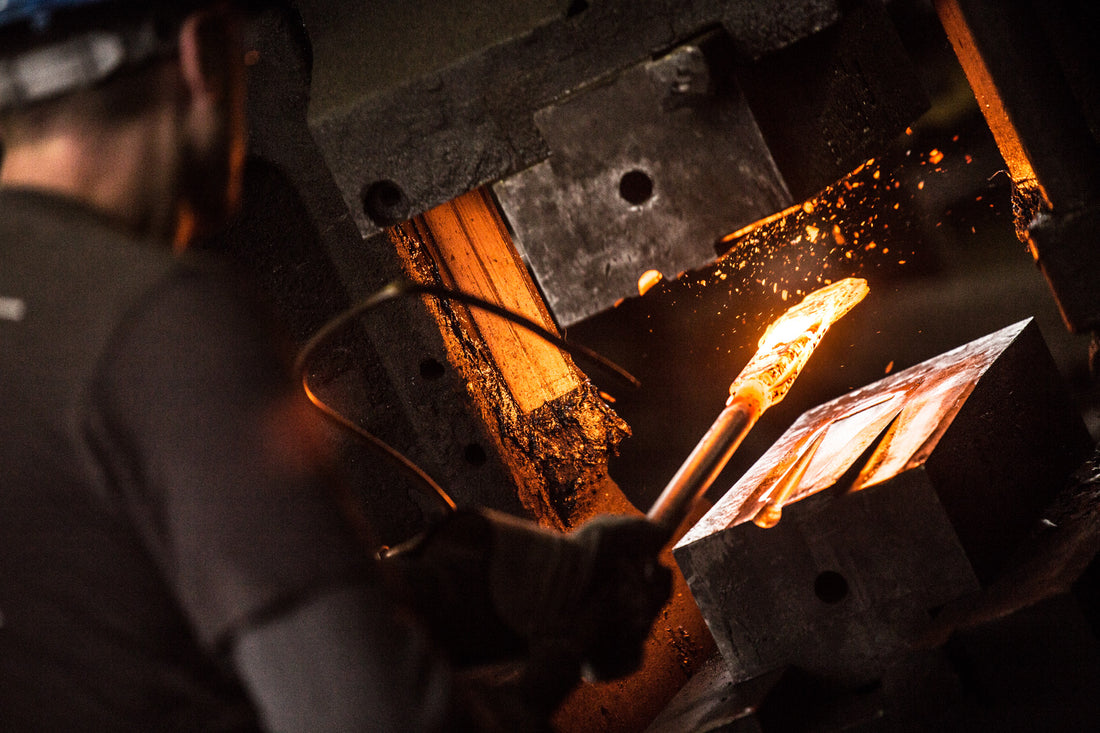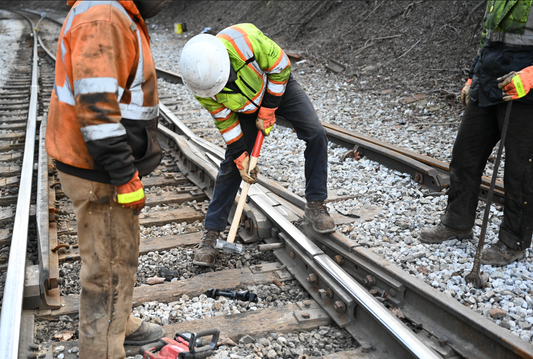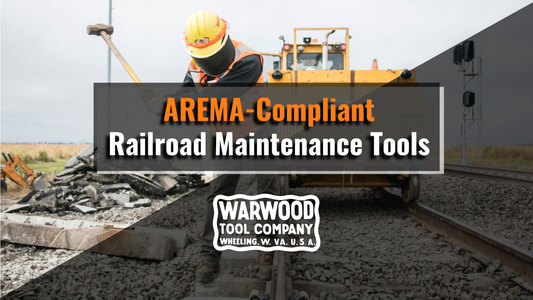If you’ve spent much time around hand tools or in hardware stores, you’ve almost certainly seen the words “drop forged” stamped on a wrench or other tool. And if you’re like most of us, you’ve probably just assumed that drop forging was some kind of manufacturing process that was better than the alternatives and then not thought much more about it.

Well, you were correct that drop forging is a method for manufacturing metal tools and that it’s generally superior to the alternative methods — casting and machining — but there’s quite a bit more to the story. Here at Warwood Tool, we’ve been drop forging industrial-grade tools like sledge hammers, adzes, picks, crow bars and mauls the same way for over a century now, and in that time we’ve turned the process into something verging on an art form. Here’s how it works.
Hot, Warm and Cold Forging
Drop forging is a special kind of forging, which simply means forming metal with force, as opposed to forming it by cutting or by melting and pouring it into a mold. The force can be applied with a hand hammer, a mechanical hammer, or a press.

Forging without heating the workpiece is called “cold forging.” Forging after heating the metal above its recrystallization temperature is called “hot forging.” Forging after heating a metal to a temperature less than its recrystallization temperature is called — you guessed it — “warm forging.” (A metal’s recrystallization temperature is the temperature at which deformed grains of its crystal structure are replaced by a new set of grains and is generally a third to half the melting temperature.)
The process you probably think of when you hear the word “forging” — hammering a red-hot piece of metal on an anvil — is hot forging, and it has been practiced for thousands of years. Basically, it involves heating metal in a furnace to make it more formable and then shaping it with force — originally applied with a hand-swung hammer.
Modern Refinement
Drop forging is really just a modern refinement of the millenia-old process of hammering a hot piece of metal against an anvil into the desired shape. Instead of swinging a hammer by hand, though, drop forging uses “drop hammers” — machines that repeatedly lift a heavy weight known as a “ram” and then, quite literally, drop it onto the workpiece, using the force of gravity.
Additionally, modern drop forging typically uses pieces called dies to achieve more complex shapes than are possible through simply striking with a flat surface like the face of a hammer against another flat surface like the top of a traditional anvil. A die is essentially a mold of the desired shape. As the heated metal is hammered into the die, it forms to the die’s shape.
At Warwood, we use what’s known as a closed die process, which means a bottom die is attached to the anvil and a top die attached to the bottom of the ram. When the ram drops, the hot metal is “sandwiched” between the top and bottom dies, forming both sides of the tool.
Historic Drop Hammers
Warwood Tool operates and maintains three historic drop hammers manufactured in the early 20th century. A special type of drop hammer known as a “board hammer,” these drop hammers employ a hardwood board attached to the top of the ram. Rollers on either side of the board grip it and raise it upward. Then the rollers retract, allowing the board and ram to drop. Our drop hammers are 1,000, 2,000 and 3,000 lb. hammers, respectively. They are operated by stepping on a foot switch and deliver 60 strikes per minute.

Warwood also operates three Bradley tilt hammers, which are used primarily for open-die forging of the tapered ends of bars and other tools. Essentially massive, power-driven versions of a blacksmith’s hammer, the Bradley hammers are powered by electric motors.
Several types of forging presses are also used to “upset” steel (create a bulb or bulge at the end of a piece of stock), to reduce the diameter of stock, to trim waste from parts, to punch eyes for handles and to stamp information on tools.

Active commercial use of these historic drop hammers and tilt hammers is extremely rare, and maintenance is a labor of love. Warwood craftsmen must sometimes fabricate parts at the on-site machine shop, and finding maple boards of the size and quality required by the board hammers is a challenge. Dies are also made and repaired in the machine shop.
Blocking, Roughing and Finishing
Warwood typically drop forges tools in three “passes,” using dies that are progressively closer in shape to the finished part. The first pass, using a die called the “blocker,” forms the steel into the general shape of the part so that it will properly fill the impression in the next die, the “rougher,” which produces a slightly oversized version of the final part. The final die, the “finisher,” brings the part to its correct tolerances.
Old vs. New
Today, most drop forging is largely automated. Instead of a human craftsman, a computer or robot operates the hammer and manipulates the workpiece. At Warwood, though, we forge tools the same way we have for more than 100 years. Skilled craftsmen operate the hammers with foot switches while manually manipulating the workpiece. With one strike per second (or more for the tilt hammers), operators must make instantaneous judgments based on experience about when and how to turn and move the workpiece. The result, we believe, is superior to anything achievable by computer, and we take great pride in elevating the drop forging process to something verging on an art form.

Forging vs. Casting and Machining
The two most common other methods for forming metal are casting and machining. Casting is the process of pouring molten metal into a mold or cast made in the desired shape and then letting it cool. Machining is the process of removing metal with cutting tools to achieve the desired shape in much the same way a sculptor might removes material from a block of wood to create a sculpture.
Both processes have their advantages. Casting is cost-effective for large-scale manufacturing. Machining isn’t nearly as cost-effective on a large scale, but makes custom one-off pieces possible, since no mold or die must be made. Modern, computerized machining also offers great precision.

But neither process strengthens metal in the way that forging does. Forging alters the grain structure of the metal, making the structure more uniform, eliminates small internal voids in the metal, and breaks up inclusions of other metals in the steel. The result is a tool that is both stronger and more durable. In fact, a forged tool is typically about 30% stronger than the unforged material it was made from.
Casting is fine for certain kinds of tools and helps keep prices low. But for tools that are repeatedly subjected to extreme forces — sledges, hammers, pry bars, mauls, adzes, axes, chisels, and wedges — forging is far superior.





